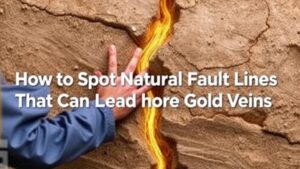How to Process Copper-Bearing Ore Without Heavy Machinery
How to Process Copper-Bearing Ore Without Heavy Machinery
Copper is one of the most widely used metals in the world, essential for electrical wiring, plumbing, and a variety of industrial applications. But, traditional methods of extracting copper from its ore often rely on heavy machinery, which can be costly and environmentally damaging. Fortunately, there are sustainable and more manual techniques for processing copper-bearing ore that minimize the need for heavy equipment. In this article, we will explore these methods, providing insights into the steps involved, tools required, and key considerations for efficiency and safety.
Understanding Copper-Bearing Ore
Copper-bearing ore primarily consists of copper minerals such as chalcopyrite (CuFeS₂), bornite (Cu₁₋ₓFeₓS), and malachite (Cu₂CO₃(OH)₂). The identification and selection of the appropriate mineral for processing is critical, as the copper content and solubility can vary significantly between them. For example, chalcopyrite, being the most abundant, typically contains around 34.6% copper, while malachite contains approximately 57.5% copper by weight.
Manual Processing Techniques
To effectively process copper-bearing ore without heavy machinery, one can utilize a combination of manual techniques and simple tools. Here are some of the most effective methods:
- Hand Sorting: Manually separating high-grade copper ore from lower-grade variants. The process involves visual inspection and the use of a hammer to break the ore into pieces. Higher grade pieces are chosen for further processing.
- Crushing and Grinding: Manual crushing may be done using a mortar and pestle. This is an effective way to break down larger ore pieces into smaller, more manageable fragments, thus increasing the exposed surface area for subsequent extraction.
- Gravity Separation: This technique leverages the differences in density between copper minerals and gangue. A simple panning method similar to gold panning can be used to separate copper minerals by washing pulverized ore in water, allowing heavier copper particles to settle at the bottom.
- Flotation: A more refined technique, flotation can be performed using a homemade flotation tank where the crushed ore is mixed with water and chemical additives (e.g., xanthates). Air is introduced, creating bubbles that cling to copper particles, allowing them to float to the surface for collection.
Leaching Copper from Ore
Leaching is an effective method for extracting copper from ores, especially those with a high oxide content. process can be divided into two main types: acid leaching and bioleaching.
- Acid Leaching: This involves applying dilute sulfuric acid to the crushed ore. The acid reacts with soluble copper oxides and sulfides, which can then be eluted. It is essential to control the pH and concentration of the acid, as excessive acidity can dissolve unwanted impurities.
- Bioleaching: An environmentally friendly alternative utilizes naturally occurring bacteria, such as Acidithiobacillus ferrooxidans, to oxidize copper sulfides, releasing copper ions into solution. This process can take weeks but is sustainable and requires no heavy machinery.
Safety Considerations
Its essential to prioritize safety when processing copper-bearing ore. Some safety measures include:
- Personal Protective Equipment (PPE): Wearing gloves, goggles, and dust masks to prevent exposure to harmful dust and chemicals.
- Proper Ventilation: Working in a well-ventilated area to minimize inhalation risks, especially if using acids.
- Understanding Chemical Hazards: Being aware of the risks associated with the chemicals used in leaching processes and having an emergency plan in place.
Real-World Applications
Several small-scale and artisanal mining operations worldwide successfully utilize these manual techniques. For example, in countries like Chile and Peru, local miners often rely on traditional methods to extract copper. employ the use of hand-held tools and gravity separation techniques to process ore with minimal environmental impact.
Conclusion
Processing copper-bearing ore without heavy machinery is not only feasible, but it also promotes sustainable mining practices. By employing manual techniques such as hand sorting, crushing, gravity separation, and leaching, miners can effectively extract copper while minimizing environmental damage and costs. Also, these methods empower local communities to engage in resource extraction without becoming overly dependent on industrial technologies. As the demand for copper continues to rise, exploring such artisanal practices becomes increasingly relevant for sustainable development in the mining sector.



